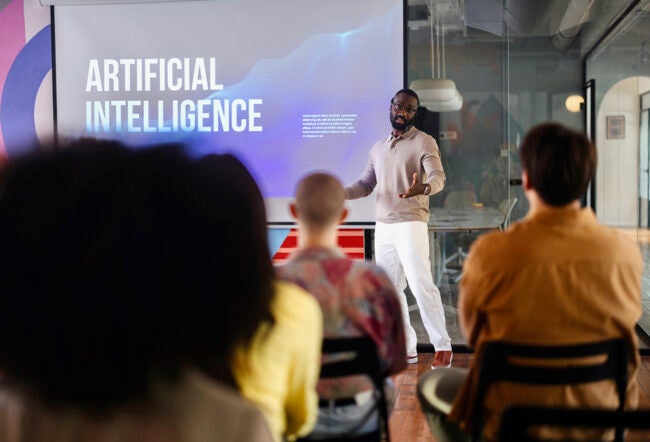When Robert A. Iger was promoted from president to chief executive officer of the Walt Disney Company on March 13, the proverbial water cooler conversations the next day concerned much more than the NCAA basketball brackets for March Madness. The appointment of Iger to replace embattled Disney CEO Michael Eisner raised a few eyebrows in the corporate world: It’s highly unusual, succession experts say, for a company to select a number-two person to succeed the number-one executive when the company’s shareholders are unhappy and the former chief was all but forced from office. Experts Wharton and elsewhere discuss the merits of hiring an outsider CEO vs. an insider, and agree that, in Iger’s case, success will hinge on his ability to follow through on his own vision — in short, his ability to behave like an outsider.
“It’s an anomaly for a company under siege to pick an insider,” said Dennis C. Carey, a consultant at global recruitment firm SpencerStuart who specializes in the hiring of CEOs. “Without implying any criticism of Disney’s decision, [Iger] is the equivalent of a field commander reporting to a general, when the general has been disgraced. It is a challenge. How can the field commander, who was responsible for carrying out the general’s orders, distance himself? How can he put on a new set of clothes and toe a new line? For at least six months, Iger must refrain from being too critical but usher in a new era for Disney. It will be an interesting dynamic to watch.”
Although the pros and cons of appointing an insider to replace an outgoing CEO can be debated, Wharton experts agree there are some definite positive results — the first one being the message it conveys to the organization. “It sends the signal that there are ways to move up within the organization, that if you are number two you can become number one,” said Wharton management professor Nicolaj Siggelkow. “It says: ‘If you work hard, you might get promoted.'”
Wharton accounting professor Wayne R. Guay agreed: “In many organizations, being promoted to CEO is the big prize in the employment tournament. That competition creates incentives for executives to do a good job. Hiring from within is a way to continue that tournament structure, so that executives realize that fine performances will move them towards the final prize. Going outside shakes up the expectations of those executives. What are they competing for? What is the prize?”
Second, tapping an insider to lead the company can provide assurance to the second-tier of executives that they don’t have to dust off their resumes and look for work, which often happens when an outsider is named CEO and brings in his or her own management team. “I would think that promotion from within makes people more comfortable,” said management professor Peter Cappelli, who is director of Wharton’s Center for Human Resources. Guay noted that this comfort level is something the new CEO should work to maintain, at least in the beginning: “If you are coming from the inside, you may want to continue with the status quo and not make radical shakeups, particularly if that is a mandate from the board and the shareholders.”
A third positive result of promoting from within: Knowledge about the corporate culture and intellectual capital are preserved. “The person coming into these top jobs from within has all the tacit knowledge about how the place works,” noted Cappelli. “He knows an awful lot about the organization, and the appointment maintains a continuity of culture.”
“If you are a complex organization, a collection of diversified businesses, it is often difficult to find someone from the outside who has the skill sets and expertise to step in,” said Guay. Siggelkow agreed, suggesting that firm idiosyncrasies and industry-specific knowledge can prevent an outside person from hitting the ground running. “I’m not saying that start-up time is a bad thing. But having a CEO come in from the outside would mean a longer learning period. And if you are from the outside, the question is, who do you turn to if you don’t know the ropes? If you are from the inside, at least you have the information. You know what the agendas are.”
Outside Hires Are Gaining Ground
According to Wharton management professor Martin Conyon, the vast majority of CEOs are appointed from within — about three-quarters. In addition to Disney, well-known companies like The Vanguard Group, Procter and Gamble and General Electric have in the past promoted their second-in-command to fill the CEO slot. But CEOs who come from the outside are gaining ground. In the United States in the 1970s, Conyon noted, the number of external candidates to make it to the CEO’s office was 15%, a figure that increased to 26% in the 1990s. Similar trends can be seen internationally. In the United Kingdom, the number of outside CEOs appointed in 1989 was 25%; by 1999, the number had risen to 35%.
Why the change? “There isn’t a universally agreed-upon answer to that question,” Conyon said. “But a general idea kicking around at the moment is that boards of directors of the last 10 or 20 years have become much more vigilant, along with a general increase in managerial quality over time. An active board can look around and decide to hire someone with top credentials but not necessarily firm specific ones.”
And citing statistics from executive search associations, Cappelli pointed out that more than half of all companies with vacancies at the vice-president level and above retain executive search firms — which means that the majority of boards of directors at least explore the possibility of hiring someone from the outside. Though boards and executive search firms are loathe to release executive search information, it is widely known that the Disney board had also seriously considered eBay CEO Meg Whitman for the job, before she took herself out of consideration.
Which begs the question: If more and more companies are considering outside hires, what are the problems raised by hiring someone from the inside?
According to Siggelkow and others, promoting from within eliminates a company’s window of opportunity to hire someone who could import new ideas, different styles and renewed energy. “You potentially get someone with different experiences and capabilities,” said Siggelkow, adding that this is often particularly important for companies that have experienced significant change in their industry and can’t expect someone on the inside to keep up.
Another potential problem? When looking to hire a new chief, boards that recruit from the inside are implying that they are satisfied with the way the company is run, when in fact that may not be the case. “If you don’t want the status quo,” Guay said, “hiring from the inside definitely gives the wrong signal.” Cappelli agreed: “You generally don’t hire outsiders to be CEO unless the company needs a change in direction.” As evidence, look no further than outside executive searches for troubled companies like scandal-plagued Tyco International, which hired Edward D. Breen from Motorola in 2002, or floundering WorldCom (now MCI), which hired Michael Capellas, then president of Hewlett-Packard, in 2002.
Promotion from within also tends to keep the previous CEO in the picture, in two different ways. If the CEO led the company for an extended period of time, “you might get into some entrenchment issues,” said Guay. “The board, in many respects, feels beholden to the CEO and sometimes allows [him or her] to do things that are not in the best interest of the shareholders. If you hire someone from within who has been at the right-hand side of the previous CEO, you have the potential of continuing that.”
And then there’s the issue of how long the previous CEO remains at the company after the new CEO is announced. (In Disney’s case, Iger is scheduled to take over on September 30, though Eisner may remain on the board until his term expires in 2006.) “The longer that person sticks around, the harder it will be,” said Siggelkow. “If I’m coming from the outside and the number one stays on, it’s a situation of equal power sharing. But if I’m number two and the number one stays on, I’m sort of a number one-B instead of a co-number one.”
Though an inside appointment helps many employees feel more comfortable, it can also have the opposite effect on executive colleagues in similar corporate ladder slots. With their opportunity for advancement suddenly eliminated, they may panic and decide to move on. “There is plenty of evidence to show this pattern in the top management team,” said Conyon. “If there are five candidates in line for the top job and one gets it — given that the CEO is going to be the CEO for the next five years or so — the others leave.” SpencerStuart’s Carey agreed: “If there is a number two who is young and gets promoted, it has a dampening effect on other, younger aspiring candidates,” he said. “You often create a dynamic where you lose your bench strength.”
Getting Rid of Old Baggage
An appointment from within raises issues unique to the line of succession and the fact that the new boss worked so closely with the previous boss: Is the new CEO under the previous boss’s shadow, if not thumb? And if the previous CEO left under unfavorable circumstances — from a management or shareholder point of view — can the new CEO shake the former CEO’s baggage? “I think that’s going to be an individual-by-individual situation, but those are the dangers of bringing in the number-two person,” said Guay. “If there is a succession plan, you would expect that the person would be quite similar to the person who trained him or her. Whether that is bad or not depends on the individual and the setting.”
The Wharton succession experts and Carey all agreed that Disney’s board faced an interesting conundrum as it wrestled with whether to pick an outsider or an insider as the new CEO. Carey noted that “given Disney’s litany of problems” with Eisner — a drop in earnings and shareholder discontent in the past — “one would have expected them to take a fresh, new perspective from a new leader.” But the chance to pick a new CEO surfaced just as the company had begun to rebound with strong earnings growth from entertainment and media, new hits at its ABC network and a growing theme park business. What better time to reward a well-known corporate insider like Iger, who has been at ABC for 30 years and, as president of Disney, figured prominently in the company’s rebound?
In the year before his appointment and immediately afterwards, Iger has responded in a way that signals he more than recognizes the unique challenges. In short, he may be the consummate inside man, but he talks like a CEO moving in from the outside. He has let it be known that he will be a different leader than Eisner, one who delegates authority and encourages executives to be more entrepreneurial and somewhat independent. The board listened, and gave him the job a year earlier than planned. And the shareholders responded positively, to Disney shares rose 18 cents to $27.77 in early trading following the announcement, climbing to $28.37 by the end of the week.
Iger “understands that people are clamoring for change,” said Carey. “He didn’t do the wrong thing and say, ‘I’m going to stay the course.’ He showed a sensitivity to change, which was Mission Critical Number One, coming from not only the shareholders but from the board and the employees of Disney. They simply wanted a new chapter. Bob, to his credit, has staked out a claim for doing things differently, as any good outside leader would have done. The challenge for Bob is similar to most CEOs coming from the outside: Being his own man.”


